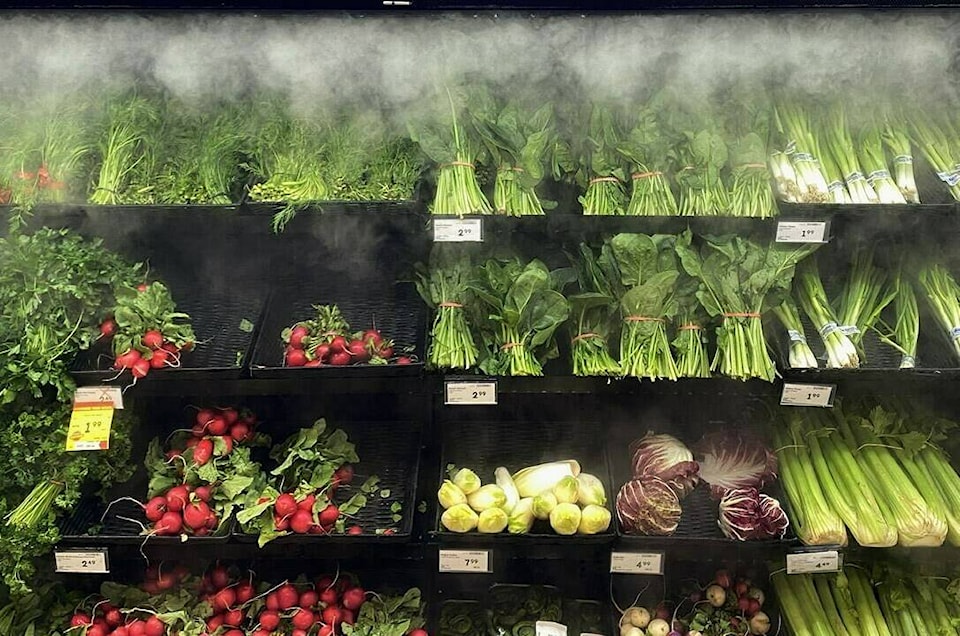Instead of enticing a foreign grocer to come to Canada, some experts say Ottawa should look at ways to support smaller and regional grocery companies to boost competition.
Industry Minister François-Philippe Champagne said this week that he’s been reaching out to foreign grocery companies in the hopes they will come to Canada and help strengthen competition in the industry.
“Am I going to succeed? I don’t know. But certainly it’s worth trying,” Champagne told reporters Tuesday, adding that more players in the market will help put downward pressure on prices.
But while the arrival of a new discount retailer like Aldi or Lidl could create some price competition, it’s not that easy for a foreign chain to come to Canada and succeed, said Peter Chapman, founder of consulting firm SKUFood and a former Loblaw executive.
For one, the country’s relatively small population and spread-out geography make it a challenge for companies to build up a network of stores and distribution centres, especially for fresh food, he said.
“Logistics are a huge component of success in this industry, and can be a big part of your costs,” said Chapman.
“So if you don’t figure out how to move product around properly … you can run into a lot of problems.”
Other barriers include requirements and regulations, plus the difficulties of marketing to vastly different parts of the country, such as Quebec.
“It’s not a given that just because you open a store and open your door with some products in it that people are going to leave the existing retailer where they shop,” said Chapman.
Canada already has a “robust” discount grocery segment, he added, between the discount banners of the major retailers, Walmart, and lower-priced stores such as Dollarama expanding their grocery offerings.
If a new discount competitor entered the market, “what prices would they have to go to to be able to carve out their niche in the market? And can they operate at that level?” asked Chapman.
The government should be focused on helping the Canadian industry, not just the grocers but also companies along the entire supply chain, said Gary Sands, senior vice-president of the Canadian Federation of Independent Grocers.
“I’m disappointed because I don’t see how bringing another foreign chain into Canada is going to help competition or help consumers.”
There are already two major U.S. grocery chains in Canada, noted Chapman: Walmart and Costco.
A new entrant would likely struggle if it tried to open up a lot of new stores at once, instead of building up a network slowly, said Chapman.
“Target did try to open a lot of stores on one day,” he said, but that Canadian expansion famously didn’t last.
The popular retailer burst onto the scene in 2013 after acquiring most of Zellers’ real estate assets several years earlier. But less than two years after opening the first Canadian Target location, the chain announced it would close its 133 stores across the country, with 17,600 employees losing their jobs.
A more recent example is Nordstrom, a high-end department store from the U.S. that closed its Canadian stores in 2023, less than a decade after opening its first Canadian location in 2014.
Target and Nordstrom both struggled because they didn’t fully understand the Canadian market, said Liza Amlani, principal and co-founder of Retail Strategy Group.
Retailers entering Canada often fall into the trap of thinking it’s just “the north of the U.S.,” she said.
But despite the challenges of bringing foreign chains to Canada (and keeping them), a new entrant could fill some of the gaps Canadians face when it comes to choice and price, said Amlani, it just has to be done right.
“Start small, test the market before you’re going to go ahead and open up a hundred stores.”
If Champagne is successful in bringing a foreign chain to Canada, it won’t be just because he asked, said Chapman.
“I think they would explore the opportunity if the government was offering some different things … some sort of enticements,” he said.
But Chapman believes Canada would be better off to “grow and strengthen from within” in order to drive competition without having to entice a foreign player into our market.
He said there are already lots of smaller and regional grocery companies in Canada that the government could be boosting in the name of competition, instead of reaching out to bigger fish across the border.
“Let’s look at the people who are already operating here and figure out how to find opportunities for them to grow and increase competition in the market,” he said.
Sands and Chapman agree that the grocery code of conduct currently near completion could help level the playing field for small- and medium-sized grocery companies, in turn driving competition.
But after two years of work on the code, a voluntary agreement meant to apply to both retailers and suppliers, the group responsible for its development said in December that its launch is being held back because Loblaw and Walmart refuse to sign.
The two grocers have expressed concern that the code could raise costs for Canadian consumers.
Federal Agriculture Minister Lawrence MacAulay has said the government is looking at all available options to move the code forward, including legislation.
The government should prioritize getting the code over the finish line, said Sands.
“That will do more to help the independent grocers in Canada, it will do more to help Canada’s smaller and medium-sized producers and processors … instead of getting on phone calls with foreign chains.”
— With files from David Friend
Rosa Saba, The Canadian Press



